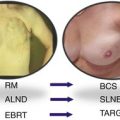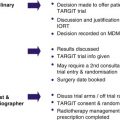, Stephen Morris2 and Michael Alvarado2
(1)
Division of Surgery and Intervention Science, Department of Surgery, University College London, London, UK
(2)
Division of Surgical Oncology, Department of Surgery, University of California, San Francisco, CA, USA
Abstract
Savedoff (2004) states, “Forty years ago, Kenneth Arrow published “uncertainty and the welfare economics of medical care” in the American Economic Review. This paper become not only one of the most widely cited articles in the field of health economics – indeed, it marked the creation of the discipline.”
20.1 What Is Health Economics?
Savedoff (2004) states, “Forty years ago, Kenneth Arrow published “uncertainty and the welfare economics of medical care” in the American Economic Review. This paper become not only one of the most widely cited articles in the field of health economics – indeed, it marked the creation of the discipline.”
Health economics can be defined as the application of the theories, tools and concepts of economics as a discipline to the topics of health and health care. Since economics as a science is concerned with the allocation of scarce resources, health economics is concerned with issues relating to the allocation of scarce resources to improve health. This includes resource allocation both between sectors of the economy and the healthcare system and to different activities and individuals within the health case system. Health economics is therefore a broad subject and studies in health economics can, amongst other things, be concerned with economic aspects of health promotion and prevention, the supply and demand of health care, health insurance, regulation of markets for health manpower, cost and benefits of medical research and economic evaluation of health care.
Due to the constant introduction of new treatment alternatives and scarce resources within the health care system, it has become increasingly important to evaluate whether new treatment options achieve health improvements at a reasonable cost. This has led to the emergence of economic evaluation of drugs and other healthcare interventions as one of the major fields of health economics. An economic evaluation is a key part of a more general health technology assessment (HTA) undertaken to gain information for decisions about new as well as established medical technologies. Appleby (2012) shows that, in the past 30 years, total national expenditures on healthcare as a percentage of gross domestic product (GDP) have increased. In the UK this figure rose from 3.9 % in 1960 to 9.4 % in 2010, in Germany it rose from 6.0 % in 1970 to 11.6 % in 2010 and in the USA it rose from 5.1 % in 1960 to 17.6 % in 2010.
20.2 What Are Costs?
A cost can be defined as the value of the resource in its best alternative use of the resource (Lidgren 2007). This is referred to as the opportunity cost. Estimating costs in an economic evaluation involves four steps:
1.
All relevant resources are identified and quantified into physical units, such as out-patient visits and number of fractions of radiotherapy.
2.
The physical unit must be valued, which means assigning a unit cost. According to economic theory, a resource should be priced based on its opportunity cost. However, in practice, the market price of the unit, or its NHS reference price, or HRG tariff, is often used.
3.
Multiplication of quantities used by their unit costs.
4.
Sum across all cost components
Cost can be split into three categories:
(a)
Direct cost: borne by the health care system, community and family in directly addressing the problem.
(b)
Indirect cost: mainly productivity losses caused by the problem or disease, borne by the individual, family, society or employer.
(c)
Intangible cost: usually the costs of pain, grief and suffering and loss of leisure time. The cost of a life is usually included in case of death.
20.3 Effectiveness
The quality-adjusted life year (QALY) is a measure of disease burden, including both the quality and the quantity of life lived. It is used in assessing the value for money of a medical intervention. The QALY model requires utility-independent, risk-neutral and constant proportional trade-off behaviour.
The QALY is based on the number of years of life that would be added by the intervention. Each year in perfect health is assigned the value of 1.0 down to a value of 0.0 for death. If the extra years will not be lived in full health, for example if the patient is unable to carry out self-care or usual activities, then the extra life years are given a value between 0 and 1 to account for this.
20.3.1 Measuring QALYs
The EQ-5D is a generic (standardised), widely used, well-validated instrument for use as a measure of health outcome, commonly employed in cost-effectiveness analyses. Applicable to a wide range of health conditions and treatments, the EQ-5D health questionnaire provides a simple descriptive profile and a single index value for health status (www.euroqol.org). The instrument contains questions in five domains: mobility, self-care, usual activities, pain/discomfort and anxiety/depression. Response options for each item include:
1.
No problems
2.
Slight problems
3.
Moderate problems or symptoms
4.
Severe problems or symptoms
5.
Unable to do or extreme symptoms
Patients choose the response that best describes their current experience in each domain, thereby aligning themselves with 1 of 3,125 possible health states (plus two extra for unconscious and dead), making a total of 3,127.
20.4 Perspective
The term “perspective” is used to define the categories of costs to be included in an economic evaluation. Various perspectives may be employed; within the UK context these are:
1.
The patient
2.
The hospital
3.
The Primary Care Trust (PCT)
4.
The NHS
5.
Society at large (societal)
The “NHS perspective” would imply that only costs to the NHS are to be included whereas the term “societal perspective” implies that all categories of cost should be included (i.e. irrespective of whose responsibility it is to pay the costs). The National Institute for Health and Care Excellence (NICE)’s perspective for the Reference Case used within the Technology Appraisal Programme is “the costs to the NHS and Personal Social Services”. This means that only the costs that fall within the remit of these two organisations should be included in Reference Case analyses.
20.5 Economic Evaluation
Economic evaluation is a structured approach to help decision makers to choose between alternative ways of using resources (Morris and Parkin 2009).
The different types of economic evaluation all measure cost in a similar way based on opportunity costs and are therefore usually distinguished by how the consequences of the compared alternatives are measured. Economic evaluations (Table 20.1) are usually divided into four categories (Drummond et al. 2005):
1.
Cost minimisation analysis
2.
Cost effectiveness
3.
Cost utility
4.
Cost-benefit analysis.
Table 20.1
Summary of economic evaluations
Method | How are benefits measured? | How are results expressed? | What is the decision making rule? |
|---|---|---|---|
Cost minimisation analysis | Proven equal | In monetary value | Choose that which costs least |
Cost benefit analysis | In monetary value | Net present value (NPV) in £ | NPV >0 |
Benefit cost (B:C) ratio | B:C ratio >1 | ||
Cost-effectiveness analysis | Natural units, e.g. pain-free days, life years gained | Incremental cost-effectiveness ratio (ICER) = Δ costs/Δ outcome | The option with the lowest ICER is best value for money |
Cost consequences analysis | In a variety of different natural units | CERs for each alternative measure of effectiveness | The option with the lowest CER is the best value for money |
Cost utility analysis | Utility, commonly measured in terms of quality-adjusted life years (QALYs) | Cost effectiveness ratio = Δ costs/Δ QALYs | The option with the lowest ICER is best value for money |
Other economic evaluations include cost consequences and budgetary analysis/impact. Simoens (Simoens 2009) explains budgetary analysis succinctly: “In addition to information about the efficiency of a new health technology, regulatory agencies in an increasing number of countries now require data about the budgetary impact of the technology on national, regional or local budgets. Whereas an economic evaluation allows decision makers to assess the efficiency of a health technology, a budget impact analysis examines the financial impact of the adoption and diffusion of the technology within a particular setting. Thus, a budget impact analysis considers the affordability of a technology. Specifically, a budget impact analysis explores how a change in the current mix of treatment strategies by the introduction of a new technology will impact spending on a disease.”
Stay updated, free articles. Join our Telegram channel

Full access? Get Clinical Tree








